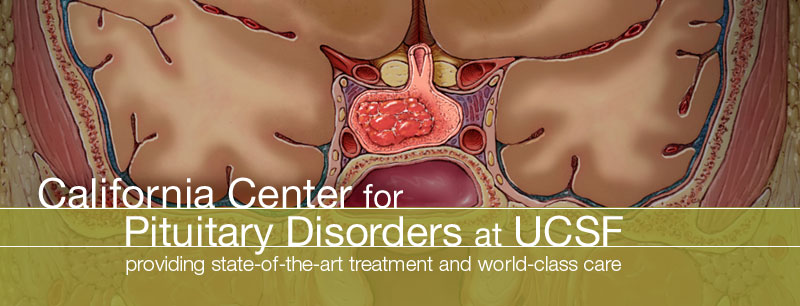Here are a few highlights from the California Center for Pituitary Disorders at the University of California San Francisco, UCSF annual Pituitary Update Conference :
Only 60% of patients with pituitary macroadenomas and vision loss have the classic presentation of bi-temporal hemianopsia. The remainders have monocular loss, superior quadrant loss, or a homonymous hemianopsia. These nonclassical presentations may lead to a delay in diagnosis and erroneous attribution of vision loss to some other cause such as cataracts, glaucoma, etc.
Older patients, and those with a duration of vision loss greater than 6 months are less likely to enjoy recovery of vision after pituitary surgery.
Children and adolescents are more likely to have large prolactinomas whereas adults are more likely to have microprolactinomas. We do not yet understand the basis for this observation.
Several prospective randomized controlled studies clearly show that cabergoline is more efficacious than is bromocriptine in normalizing prolactin and causing regression in tumor size in patients with prolactinomas.
Fifty percent of patients resistant to bromocriptine respond to cabergoline.
Dopamine agonist resistance is due to a decrease in dopamine receptors on the prolactinoma cell surfaces. This can be possibly be overcome by increasing the dosage of the drug in some patients.
2.4%- the risk of growth of a microprolactinoma during pregnancy.
21%- the risk of growth of a macroprolactinoma during pregnancy.
3T (Tesla) MRI is superior to 1.5T MRI in defining pituitary and parasellar anatomy and pathology.
Dopamine agonists used in conjunction with somatostatin analogues may improve the response rate in Acromegalic patients treated with somatostatin analogues alone.
The objective of surgery in craniopharyngioma is to remove as much tumor as is possible causing as little damage, if any at all, to normal structures. Subtotal resections and preservation of neural structures is preferred to total resection and hypothalamic damage and vision loss. It is preferable to spare pituitary function in children. Customization of therapy according to age at presentation is essential.
Large nonfunctional pituitary macro adenoma that was resected in its entirety by an excellent pituitary surgeon. It’s essential to find an experienced surgeon to perform your operation.
© 2014, Pituitary World News. All rights reserved.
